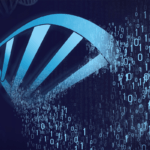A locus is the precise position of a gene on a chromosome. Different alleles of the same gene occupy the same locus.
Locus: The Genetic Address on Chromosomes
The term “locus” might sound like something from a crime drama, but in the world of genetics, it’s a fundamental concept. A locus is like a specific address on a chromosome where a particular gene resides. In this exploration, we’ll delve into loci’s meaning, importance, and roles in genetics.
Understanding the Concept of Loci
- GenesGenes are DNA segments (or RNA in some viruses) that dictate cellular processes, traits, and hereditary information, promoting genetic diversity and evolution in living organisms. More and Chromosomes: Genes are the units of heredity, containing the instructions for specific traits or functions. In eukaryotic organisms like humans, genes are housed within chromosomes. A locus is the precise position on a chromosome where a gene is located. Think of it as the gene’s home address within the cell.
- AllelesAlleles are different forms of a gene resulting from mutations or variations in the DNA sequence or gene expression. They can be dominant (expressed with one copy) or recessive (expressed only with two copies). More and Loci: Genes come in different versions known as alleles. These different alleles of the same gene occupy the same locus on homologous chromosomes. For instance, if you’re looking at the locus for eye color, there may be alleles for brown eyes, blue eyes, or green eyes, and they all share the same address on a specific chromosome.
The Significance of Loci
- Mendelian Genetics: Understanding loci is crucial in Mendelian genetics, which explores how traits are inherited from one generation to the next. Mendel’s laws of inheritance, such as the law of segregation and the law of independent assortment, are based on the behavior of alleles at specific loci.
- Genetic Variation: Loci are also key to genetic diversity. The alleles at a locus are responsible for the variation in traits. For example, variations in the locus that determines blood type are what give rise to different blood types like A, B, AB, and O.
- Complex Traits: Loci are not limited to simple, single-gene traits. Multiple loci across different chromosomes often influence complex traits, like height or susceptibility to certain diseases. Understanding these loci can help us unravel the genetic basis of complex traits.
Molecular Techniques for Studying Loci
- Molecular Markers: Researchers use molecular markers, like single nucleotide polymorphisms (SNPs), to identify and study loci. By examining the variations at specific loci, they can trace the inheritance of alleles and gain insights into genetic relationships.
- GenomeA genome is the complete set of an organism's genetic material, while genomics is the study of genomes, investigating their evolution, structure, and function. More Mapping: Genome mapping involves identifying the loci of specific genes or markers on a chromosome. This mapping can be crucial in various fields, from plant breeding to understanding the genetic basis of diseases.
In Summary:
Loci are specific addresses on chromosomes where genes reside. They play a fundamental role in inheritance, genetic diversity, and complex traits.




